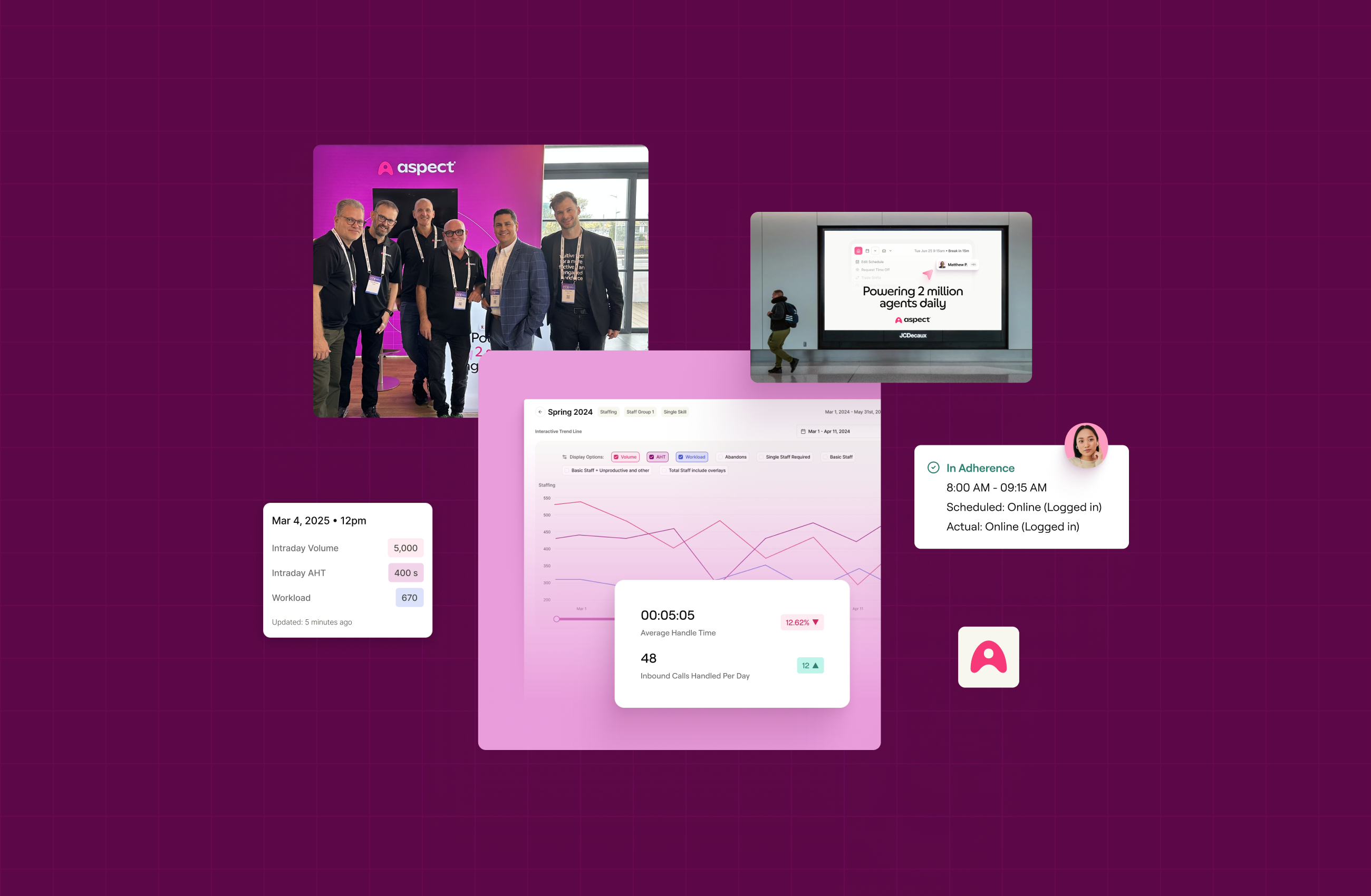It's no secret that engaged and satisfied employees are a major driver of business success. A happy workforce is more likely to be a productive one and it's important for businesses to recognize industry trends in employee engagement. Understanding trends in employee satisfaction and engagement can help businesses adjust workforce strategies to keep teams invested in their work and workplace.
As you develop new strategies to engage your workforce, consider the following trends that can impact employee engagement and satisfaction.
Personalized solutions drive better employee experiences
The employee experience isn't one size fits all. Employees need relevant, helpful information that suits their role and personal needs. Every person has different feedback requirements, satisfaction levels, and professional development goals. Their workday should reflect as much.
Engagement strategies should be personalized to meet an employee’s needs and preferences. Workforce tools can be leveraged to analyze employee performance data and automate personalized solutions.
This can include customized solutions for:
- Career growth. A personalized career path will give employees something to work towards, offering professional development opportunities aligned with interests and goals.
- Training and upskilling. Employees will have varying skill sets. Specialized training to identify and close skill gaps can set teams up for success and satisfaction.
- Scheduling. Flexible scheduling is necessary to keep employees happy. This can be done by automating scheduling based on employee preferences while still balancing workforce needs.
Prioritize employee autonomy and work-life balance
Poor consideration for employee wellbeing and work-life balance is one of the most common reasons for individuals leaving a job. Now more than ever, employees are seeking jobs that fit into their personal lives rather than putting work above all else. Work-life balance and personal wellbeing are especially important in high-volume, high-stress roles that many frontline workers typically fill. Contact center employee turnover has reached upwards of 60%, with many employees citing poor work-life balance as a driving force to leave.
Workplaces can improve work-life balance through:
- Preference-based scheduling. Empower your employees to take control of their work-life balance by ensuring they have a say in when and how often they work.
- Employee wellness programs. Develop programs that encourage or even reward employees to care for their mental and physical wellbeing, addressing burnout and minimizing turnover.
Consistent communication surrounding role clarity and job expectations
The shift toward remote and hybrid work has blurred communication lines for many workforces, making it more difficult for employees to understand their role. Having unclear or unrealistic expectations can be discouraging for new employees but can also be frustrating for tenured team members with shifting roles.
Businesses must develop a culture of communication built upon consistent feedback and meaningful conversations surrounding expectations. Transparent, consistent, and respectful communication between employees and leadership will clarify expectations, ensuring teams are set up to reach their goals. When employees feel valued and successful, they’re more likely to feel satisfied and stay onboard.
Upskill both hard and soft skills with ongoing training programs
Employees need to feel equipped to handle the work they do. Without ongoing skill development, service will fall flat, and your team may start to feel discouraged and unsatisfied.
In a frontline workforce, quality customer experiences often reflect business success. Employees need to have a strong, varied skill set with ongoing training to provide the best customer service experiences possible. This includes a combination of training both hard and soft skills. Contact center employees need ongoing training to effectively use workforce software and other business systems in a dynamic industry. Employees in customer service roles also need upskilling in people skills, including communication, empathy, and problem solving, which are strong characteristics of an engaged workforce.
AI as an ally to boost employee productivity and satisfaction
AI can enhance employee experiences by streamlining work processes to save teams time. Companies should embrace AI to improve workforce management efforts for leadership, but also to boost satisfaction for employees.
According to Gallup, only about 21% of frontline employees say they use AI during their workdays while 44% of white-collar workers have utilized AI in their roles. Of the employees who use AI across industries, 45% state that AI has boosted productivity and efficiency. Enabling frontline employees to utilize AI and automation in their roles, where possible, can help them streamline their workdays and maximize efficiency. Businesses not only need to adopt AI or automation tools but must also ensure the employees that use these solutions are trained and supported throughout implementation.
As you assess your workforce and employee engagement, do you see where any of these trends come into play? Where can you make effective changes based on these trends?









